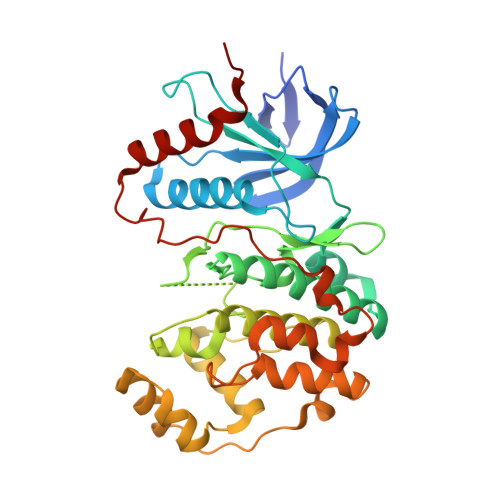A unique inhibitor binding site in ERK1/2 is associated with slow binding kinetics.
Chaikuad, A., M C Tacconi, E., Zimmer, J., Liang, Y., Gray, N.S., Tarsounas, M., Knapp, S.(2014) Nat Chem Biol 10: 853-860
- PubMed: 25195011
- DOI: https://doi.org/10.1038/nchembio.1629
- Primary Citation of Related Structures:
4QTA, 4QTB, 4QTC, 4QTD, 4QTE - PubMed Abstract:
Activation of the ERK pathway is a hallmark of cancer, and targeting of upstream signaling partners led to the development of approved drugs. Recently, SCH772984 has been shown to be a selective and potent ERK1/2 inhibitor. Here we report the structural mechanism for its remarkable selectivity. In ERK1/2, SCH772984 induces a so-far-unknown binding pocket that accommodates the piperazine-phenyl-pyrimidine decoration. This new binding pocket was created by an inactive conformation of the phosphate-binding loop and an outward tilt of helix αC. In contrast, structure determination of SCH772984 with the off-target haspin and JNK1 revealed two canonical but distinct type I binding modes. Notably, the new binding mode with ERK1/2 was associated with slow binding kinetics in vitro as well as in cell-based assay systems. The described binding mode of SCH772984 with ERK1/2 enables the design of a new type of specific kinase inhibitors with prolonged on-target activity.
- Structural Genomics Consortium, University of Oxford, Old Road Campus Research Building, Oxford, UK.
Organizational Affiliation:



















